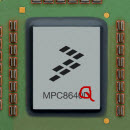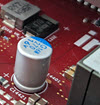 A common question from simulation users to us simulation providers is “can I simulate a machine with N cores”, where N is “large”. As if running lots of cores was a simulation system or even a hardware problem. In almost all cases, the problem is with software. Creating an arbitrary configuration in a virtual platform is easy. Creating a software stack for that arbitrary platform is a lot harder, since an SMP software stack needs to understand about the cores and how they communicate.
A common question from simulation users to us simulation providers is “can I simulate a machine with N cores”, where N is “large”. As if running lots of cores was a simulation system or even a hardware problem. In almost all cases, the problem is with software. Creating an arbitrary configuration in a virtual platform is easy. Creating a software stack for that arbitrary platform is a lot harder, since an SMP software stack needs to understand about the cores and how they communicate.
Essentially, what you need is a hardware design that has addressing room for lots of cores, and a software stack that is capable of using lots of cores — even if such configurations do not exist in hardware. Unfortunately, since software is normally written to run on real existing machines, there tends to be unexpected limitations even where scalability should be feasible “in principle”.
Here is the story of how I convinced Linux to handle more than two cores in a virtual MPC8641D machine.
Continue reading “Three Cores make a Crowd — or a Problem”




 I have just released a
I have just released a  There is
There is  A common question from simulation users to us simulation providers is “can I simulate a machine with N cores”, where N is “large”. As if running lots of cores was a simulation system or even a hardware problem. In almost all cases, the problem is with software. Creating an arbitrary configuration in a virtual platform is easy. Creating a software stack for that arbitrary platform is a lot harder, since an SMP software stack needs to understand about the cores and how they communicate.
A common question from simulation users to us simulation providers is “can I simulate a machine with N cores”, where N is “large”. As if running lots of cores was a simulation system or even a hardware problem. In almost all cases, the problem is with software. Creating an arbitrary configuration in a virtual platform is easy. Creating a software stack for that arbitrary platform is a lot harder, since an SMP software stack needs to understand about the cores and how they communicate.
 Edited on 2009-Feb-01, to include the link to the illustrated guide that really helps you get there faster. Thanks Simon! Also, promoted to front page, original post was put up on 2008-Nov-09.
Edited on 2009-Feb-01, to include the link to the illustrated guide that really helps you get there faster. Thanks Simon! Also, promoted to front page, original post was put up on 2008-Nov-09.